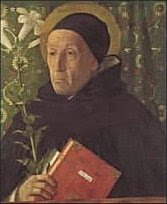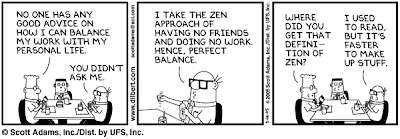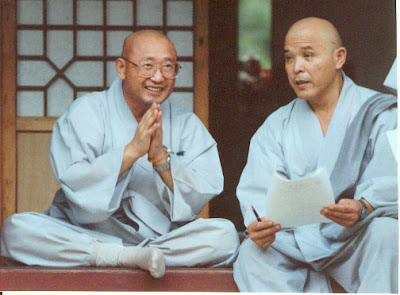
Meister Eckhart, who is probably the best-known Christian mystic of the Middle Ages, was totally committed to God and the Catholic Church. Because of his intellectual brilliance, he rose in the church hierarchy until he earned the position of Regent Master of the Studium Generale in Köln, Germany. In this position he had great influence over the religious life of central Europe. However, Eckhart had a series of profound mystical experiences of Christ-Consciousness, and as he gradually integrated those experiences into his teachings, his words became more and more mystical.
Today, his most famous statement, “The eye through which I see God is the very eye through which God sees me,” is quoted in hundreds of contemporary spiritual books. This is the kind of statement that, at the height of his teaching career, caused the Papacy to ban his writings as heretical. Although Eckhart is now recognized by the Catholic Church as one of its deepest and most enlightened priests, it is easy to see why he was so misunderstood during the Middle Ages. In 1985 the Pope, John Paul II, said,
Did not Eckhart teach his disciples: “All that God asks you most pressingly is to go out of yourself—and let God be God in you?’’ One could think that, in separating himself from creatures, the mystic leaves his brothers, humanity, behind. The same Eckhart affirms that, on the contrary, the mystic is marvelously present to them on the only level where he can truly reach them, that is in God.
What a wonderful case of rehabilitation! The church that initially condemned Eckhart now praises him. Imagine how shocked his contemporaries must have been when Eckhart said,
“What is truth? Truth is something so noble that if God could turn aside from it, I could keep to the truth and let God go.” Along this same line he also said, “All those who want to make statements about God are wrong, for they fail to say anything about Him. Those who want to say nothing about Him are right, for no word can express God.”
This statement is remarkably similar to a statement by Laozu in the Daodeqing that says, “The Dao that can be named is not the eternal Dao. The name that can be named is not the eternal name. The unnamable is eternally real.” Although they came from different cultures and different times, both Eckhart and Laozu had discovered the same core reality. Eckhart uses the word “God” and Laozu uses the word “Dao,” but both men advise that the word or concept is far from the living truth.
Like so many other mystics, saints, sages, and religious masters, Eckhart discovered that, at a certain level, our mind encounters the Infinite. To reach that level we must limit the mental habit of cognition, which splits the world into self and not self. Judging from world history very few of us have had the patience, persistence, or necessary desire to reach that level and meet God face-to-face. Most of us are content to think about God, talk about God, and periodically petition God for assistance. What did Eckhart say we should do to discover the truth? He said,
safe from images of outside things which remain external to him and, alien as they are, cannot traffic or forgather with him or find any form in him at all. Secondly, inventions of the mind itself, ideas, spontaneous notions or images of things outside or whatever comes into his head, he must give no quarter to on pain of scattering himself and being sold into multiplicity. His powers must all be trained to turn and face his inner self. (David Stendl Rast, The Man From Whom God Nothing Hid)
In this statement Eckhart is advising us to spend time cultivating the non-conceptual mind and informing us that the process isn’t easy.
Most of us conceive God to be some sort of powerful entity who created the universe and now watches over its operation. In the conventional form of this concept, God is a sort of super father figure who selectively intervenes in our lives. In some cultures people have conceived God to be a group of entities and in other cultures God is conceived as a force that manifests in different ways. The main problem with any of these concepts is that we become blinded by the images that these concepts evoke and never attempt to acquire direct experience.
The best concept, if we must have one, is one in which God is identified as the total process of reality a process which can be experienced on many levels. At least this concept does not evoke blinding images, and it also extends from inside ourselves to the farthest galaxy, which is what Eckhart, Laozu, and all other great religious figures have tried to communicate. It also suggests that we must do something radically different if we are to experience that process at a deep level. In other words, we, the universe, mind, reality, and God are One a unified Whole which is alive, intelligent, loving and vast beyond comprehension. When conceived, this One must be psychologically divided into at least two states, observer and observed, but when directly perceived, the observer, the observed, and the act of observing become one. This is what God means when in the Bible he tells Jacob, “I am he; I am the first, I am also the last.” (Isaiah 48:12) This is also Christ’s meaning when he says, “If God were your Father, ye would love me: for I proceeded forth and came from God; neither came I of myself, but he sent me.” (John 8:42) Eckhart puts it this way,
No difference exists either in the nature of God or in the Persons so far as they are one in nature. The divine nature is one and each of the Persons also is one, the same one as their nature. Distinction in being and existence is taken as same and is one. Where it is not in [God] it takes on and has and shows difference. In one, God is found, so to find God a man must be one.
Laozu agrees, saying, “Ordinary men hate solitude. But the Master makes use of it, embracing his aloneness, realizing he is one with the whole universe.” These men discovered the reality, which the concept and word “God” represents.
To reach the level of mind wherein we directly perceive God rather than thoughts about God, we must use our mind in a completely different way than usual. Instead of reflecting we must practice seeing; instead of judging we must practice hearing; instead of imagining we must practice smelling; instead of naming we must practice feeling; and instead of talking we must practice tasting. In short, we must stop habitually using our intellect and spend more time interacting with the world directly through our senses. We must practice becoming one-with reality by refusing to psychologically divide it. We are like small droplets of water flung up by the ocean when it crashes against a rocky shoreline. Momentarily, each tiny water drop can become attached to an individual existence and identity, but after falling back into the ocean, each droplet’s true identity becomes obvious. By practicing direct perception, it is possible for us to psychologically fall back into the ocean of God and penetrate the illusions created by cognition to discover what Christ called our True Self.
Most of us never experience God face-to-face because we never make an effort to change our mental habits. We remain blinded by the idea that we are things with names like John, Mary, or Bill. Although we don’t know how our bodies circulate blood, digest food, contract muscles, grow bones, or think, we have the audacity to imagine that we understand reality. When we imagine this sort of thing, our degree of blindness is staggering!
this is an expansion on a post I made a while back which was inspired by my good friend Zen Master James Ford.
Labels: christianity, mysticism





















